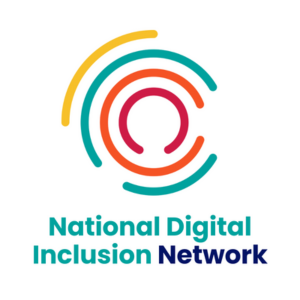Insights
INSIGHTS
All Topics
Six steps to confronting digital exclusion
Being digitally excluded makes it difficult to access essential charity services that are on offer. We explore some ways to eliminate this challenge for your service users
Click to listen to the articleplay_arrow06:52
An estimated 1 million people cut back or cancelled internet packages in 2023 due to affordability issues, 2.4 million adults are unable to complete a single basic task to get online, and 5 million workers are expected to be under-skilled in basic digital skills by 2030. These figures show the past, present, and potential future of digital exclusion, and several of the ways it can manifest.
Being unable to use digital can have a range of impacts, with one being that people are less able to access essential information and services. In response to this, the 2023 Charity Digital Skills Report found that 14% of charities were worried about excluding people from digital services.
In this article, we explore the best ways for charities to make their services and outreach more digitally inclusive.
Understand who is impacted by digital exclusion
Digital exclusion happens because of lack of availability and affordability, insufficient skills, and barriers to meaningful access and participation. It can impact people of any age and any socio-economic background. Around one in seven people are deprived across two or more dimensions of digital, according to Deloitte and the Digital Poverty Alliance.
Research has also found that older adults and young adults are more likely to be digitally excluded than middle aged adults, that women are more likely to be in digital poverty than men, and that the unemployed are more likely to be in digital poverty than the employed. People who have disabilities are over 50% more likely to face barriers to accessing digital and online services than non-disabled people.
The Great British geography of Internet use and engagement gives insight as to how people living in different areas of the UK interact with the internet.
Knowing who is impacted by digital exclusion can help you conceptualise who could be missing out on your services because of lack of digital access.
Co-design your service delivery and outreach
Involving service users in the processes that impact them is a key element of empowerment. For example, in their briefing ‘Supporting older carers who are digitally excluded’, Carers UK advise asking carers about the digital barriers they face to understand their experiences and avoid a one-size-fits-all approach. They also recommend asking for feedback on whether non-digital support has been helpful.
To avoid survivorship bias, it’s also a good idea to reach beyond your existing service users to find out how you could be doing things better for those you aren’t yet reaching. To do so, the NHS recommends setting up a focus group, partnering with local community organisations, or asking local participation groups to help.
The National Digital Inclusion Network is able to reach people who are the furthest from being online or would be less easy to reach in other settings. Connecting with organisations in the network can therefore be a good opportunity to reach people who are digitally excluded.
Partner with key organisations
Partnering with other organisations can help spread the word of your charity and refer people to your services where appropriate.
Sarah Parkes, Digital Programme Manager at Age UK, recommends forming strong links with other community organisations to ensure collaboration, reduce the risk of duplication and competition, and help widen your charity’s reach. This includes making sure you provide them with all the information they need to help spread the word of your services.
Use offline channels
Another way to reach digitally excluded service users is producing offline resources such as posters and information leaflets and supplying them in key places where digitally excluded people are likely to find them.
This could include in GP practices, libraries, community centres, places of worship, and local digital inclusion hubs. It could also involve using non-digital forms of contact such as or postal mail or phone calls.
Always maintain and advertise non-digital ways for people to contact the charity and use its services, for example calling on the phone or attending an in-person drop-in.
Audit your digital technologies, skills, and strategy
Inaccessible technology may be standing in the way of your charity reaching out and delivering services effectively.
Taking stock of the technologies you use with service users, use key questions to build a picture of the gaps created by digital exclusion:
- Do you require service users to have their own device and a stable internet connection?
- Do the tools require advanced digital skills?
- Do they create additional barriers for people who have disabilities?
- Do people feel safe or unsafe when using your digital tools and services?
Making sure that staff and volunteers have necessary digital skills and resources is also important to reaching those service users who are digitally excluded. It can mean, for example, that the organisation is able to provide ongoing support with any digital technologies involved in your services.
Embedding inclusion each time you review the charity’s digital strategy can help ensure that as digital tools, the charity, and society evolves, your charity does not leave people behind.
Make changes as you can
Many charities are not in the position to increase the reach of their services right now, with half of charities (50%) saying they are at full capacity for their services, over a third (35%) saying they cannot help anyone else, and one in seven (15%) saying they have been forced to turn people away, according to Charities Aid Foundation (CAF).
We recommend that those already struggling to meet service demand take realistic, incremental steps towards digital inclusion where possible over time. We have also previously explored how to meet service demand in the cost-of-living crisis, and our Cost-of-Living Hub provides further guidance.
Visit our Digital Inclusion Hub
Click above to visit our Digital Inclusion Hub and find help on reaching across the digital divide
Josie Sparling
More on this topic
Recommended Products
Recommended Products
17 May 2024by Ioan Marc Jones
A guide to mental health awareness
17 May 2024by Ioan Marc Jones
Everything you need to know about the Charity Commission
16 May 2024by Josie Sparling
Why digital inaccessibility is everyone’s problem – and how to fix it
Our Events
Webinar: A charity guide to Meta Quest VR
Join us on the 30th of May, where we will explain more about how VR technology works and how it can help charities, hearing from organisations where the technology has already made a difference.
We use cookies so we can provide you with the best online experience. By continuing to browse this site you are agreeing to our use of cookies. Click on the banner to find out more.



















